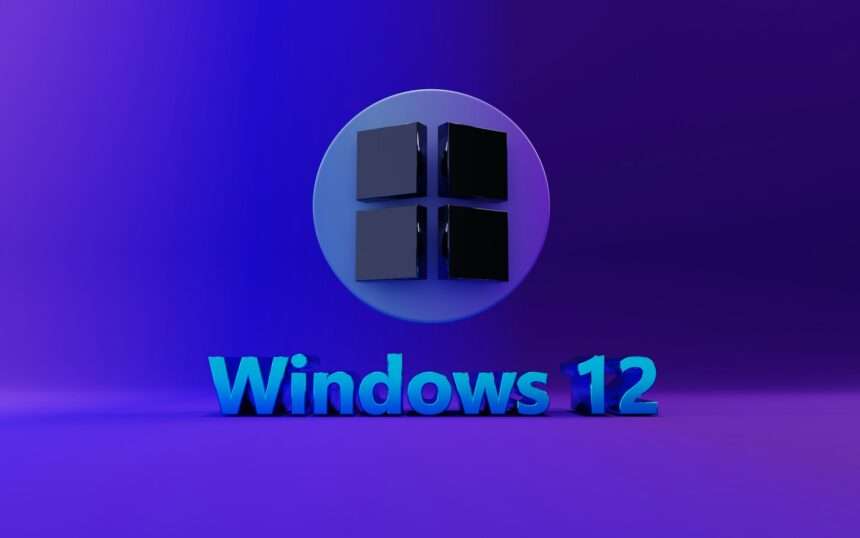If you manage Windows Server infrastructure and haven’t patched yet, stop reading this and patch immediately. Then come back.
- What WSUS Is and Why It’s Juicy Target for Hackers
- The Vulnerability: How It Actually Works
- How We Know It’s Being Exploited: The Evidence
- Why This Exploit Is Catastrophic
- Reason 1: No Authentication Required
- Reason 2: Remote Code Execution
- Reason 3: WSUS Is Often Neglected
- Reason 4: It’s a Supply Chain Attack Platform
- How to Know If You’ve Been Compromised
- What You Must Do Now
- Immediate Actions (Do This Today)
- Short-Term Actions (Next 48 Hours)
- Medium-Term Actions (Next 2 Weeks)
- The Broader Lesson
On October 23rd, Microsoft released an emergency out-of-band security update for a critical vulnerability in Windows Server Update Services (WSUS). Within hours, hackers were exploiting it. Within days, it was one of the most actively exploited vulnerabilities on the internet. By late October, the U.S. Cybersecurity and Infrastructure Security Agency (CISA) added it to the list of known exploited vulnerabilities and ordered all federal agencies to patch by November 14th.
CVE-2025-59287 is that rare breed of vulnerability: critical, unauthenticated, remotely exploitable, with active exploitation in the wild and working proof-of-concept code publicly available. According to Palo Alto Networks Unit 42’s analysis, this vulnerability represents one of the most dangerous attack vectors in enterprise Windows infrastructure.
Here’s what you need to know, why it matters, and what to do about it.
What WSUS Is and Why It’s Juicy Target for Hackers
Windows Server Update Services (WSUS) is infrastructure you probably don’t think about much. It sits quietly in your data center, pulling Microsoft updates, storing them locally, and distributing them to your Windows servers and desktops.
Sounds boring. It’s not.
WSUS is a single point of control for patch distribution across your entire organization. Compromise it, and an attacker can inject malicious “updates” into your patch stream. Instead of deploying security patches, you’re deploying attacker code to every Windows device in your organization.
According to CIS Advisory 2025-099, successful exploitation of WSUS gives attackers “full control of the WSUS server and the ability to distribute malicious updates to client devices.” That’s not a vulnerability. That’s a supply chain attack platform.
As Palo Alto’s Justin Moore summarized: “By compromising this single server, an attacker can take over the entire patch distribution system. With no authentication required, they can gain SYSTEM-level control and execute a devastating internal supply chain attack.”
The Vulnerability: How It Actually Works
CVE-2025-59287 is a deserialization vulnerability. Let’s break that down into terms that matter.
The Technical Foundation
WSUS passes data around internally using serialized objects—complex data structures converted into byte streams for transmission and storage. When WSUS receives serialized data, it deserializes it (converts it back into objects) so the application can use it.
The problem: WSUS uses unsafe .NET deserialization methods (BinaryFormatter and SoapFormatter) without properly validating what type of objects it’s deserializing. An attacker can send specially crafted serialized data that, when deserialized, creates malicious objects that execute arbitrary code.
According to Orca Security’s detailed technical breakdown, the vulnerability stems from inadequate type validation in the GetCookie() and ReportingWebService endpoints. These endpoints accept an AuthorizationCookie that gets decrypted and then deserialized without proper checking.
The Attack Flow
Here’s what actually happens when an attacker exploits this:
1. Reconnaissance: Attacker scans the internet for WSUS servers exposed on default ports 8530 (HTTP) or 8531 (HTTPS).
According to Cybersecurity Dive’s reporting, Cortex Xpanse identified approximately 5,500 WSUS instances exposed to the internet, and Shadowserver tracked over 2,600 with default ports open.
2. Exploitation: Attacker sends malicious POST request to WSUS web service endpoint (typically /ReportingWebService/ReportingWebService.asmx or /SimpleAuthWebService/SimpleAuth.asmx).
3. Execution: WSUS deserializes the malicious object. Gadget chain execution (a chain of .NET classes that can be weaponized) triggers arbitrary code execution running as SYSTEM (the highest privilege level).
4. Command Execution: PowerShell spawns with attacker code. Reconnaissance commands execute (whoami, net user /domain, ipconfig /all).
5. Data Exfiltration: Results sent to attacker-controlled webhook. Attacker now knows internal network structure, Active Directory users, and network configuration.
How We Know It’s Being Exploited: The Evidence
This isn’t theoretical. Actual hackers are doing this right now.
The Attack Timeline
According to Huntress’s incident response team, exploitation began literally hours after Microsoft released the emergency patch on October 23rd.
Huntress observed threat actors actively targeting WSUS instances across four customer networks. Process analysis showed exploitation activity:
- wsusservice.exe spawning cmd.exe spawning powershell.exe
- w3wp.exe (IIS worker) spawning cmd.exe spawning powershell.exe
The PowerShell payload executed reconnaissance commands and exfiltrated results to Webhook.site endpoints.
The Webhook Evidence
According to Sophos Cyber Threat Unit analysis, public webhook data revealed the targets and extent of attacks:
By October 24 at 11:32 UTC (less than 36 hours after the emergency patch), attackers had already exploited vulnerable servers enough times to max out 100 webhook requests. The exfiltrated data included:
- Domain user lists from multiple organizations
- Network interface configuration details
- Server hostnames and IP addresses
- Evidence of victims across universities, technology, manufacturing, and healthcare sectors
Most victims based in the United States.
The Weaponization Speed
One particularly revealing detail: security researchers believe state-sponsored actors or advanced ransomware gangs developed exploitation tools within hours of the advisory. According to Heise’s reporting, the speed of exploitation weaponization indicates this isn’t casual cybercriminals—this is sophisticated threat actors.
Why This Exploit Is Catastrophic
Every vulnerability is bad. Some vulnerabilities are worse than others. CVE-2025-59287 ranks among the worst possible:
Reason 1: No Authentication Required
You don’t need credentials. You don’t need to trick a user. You don’t need social engineering. If your WSUS server is exposed to the internet (and many are), an attacker can exploit it from anywhere.
CVSS severity score: 9.8 out of 10. That “9.8” is screaming at you.
Reason 2: Remote Code Execution
The exploit doesn’t just steal data. It executes arbitrary code as SYSTEM privilege on your WSUS server. From there, attackers can:
- Inject malicious updates into patch stream
- Gain foothold in corporate network
- Move laterally to other systems
- Establish persistent access
- Steal sensitive data
- Deploy ransomware
Reason 3: WSUS Is Often Neglected
According to Palo Alto Networks Unit 42, WSUS is often overlooked by security teams. It’s treated as infrastructure that “just works” and doesn’t get regular attention.
This means many organizations:
- Haven’t patched yet despite urgent warnings
- Have WSUS exposed to the internet unnecessarily
- Aren’t monitoring WSUS for suspicious activity
- Haven’t isolated WSUS on segmented networks
Reason 4: It’s a Supply Chain Attack Platform
Compromise WSUS, and you can distribute malicious code to every device in the organization through the trusted update channel. Devices accept updates from WSUS because they should trust it. Inserting malicious code into that stream defeats security layers that would normally catch malware.
How to Know If You’ve Been Compromised
If your WSUS server was exposed and running vulnerable versions, you might be compromised. Here’s how to check:
Forensic Indicators
According to Huntress’s forensic analysis, look for these artifacts:
In WSUS logs:
- C:\Program Files\Update Services\Logfiles\SoftwareDistribution.log
- Entries containing: “System.Data.DataSet.DeserializeDataSetSchema”
- Errors about “System.Runtime.Serialization.ObjectManager”
- “Unable to connect to the remote server” WebException errors
In IIS logs:
- C:\inetpub\logs\LogFiles\W3SVC*\u_ex*.log
- POST requests to /ReportingWebService/ReportingWebService.asmx
- POST requests to /SimpleAuthWebService/SimpleAuth.asmx
- POST requests to /ClientWebService/Client.asmx
- Requests with HTTP 200 responses that shouldn’t be there
In process forensics:
- wsusservice.exe spawning cmd.exe
- w3wp.exe spawning cmd.exe
- cmd.exe spawning powershell.exe from unexpected parent processes
Network Indicators
- WSUS server making outbound HTTP POST requests to external IP addresses
- Connections to webhook.site domains
- Encrypted traffic patterns inconsistent with normal update flow
What You Must Do Now
Immediate Actions (Do This Today)
1. Patch Immediately
Microsoft released KB5070881 (Windows Server 2025), KB5070879 (23H2), KB5070884 (2022), KB5070883 (2019), KB5070882 (2016), KB5070886 (2012 R2), and KB5070887 (2012).
Get the right KB for your server version and install it. Yes, now. Stop reading and go patch.
2. Block Internet Access to WSUS
WSUS should never be exposed to the internet. If it currently is:
- Add firewall rules blocking inbound traffic to ports 8530/8531 from internet
- Restrict access to WSUS only to your internal network
- Disable WSUS if you don’t actually use it
3. Check Your Exposure
Use Shodan or Censys to search for your IP address. If WSUS is showing up, it’s exposed. Fix that.
Short-Term Actions (Next 48 Hours)
4. Hunt for Compromise
If your WSUS was exposed, search for forensic indicators listed above. If you find them, you’ve been compromised. Treat it as breach incident:
- Isolate WSUS server from network
- Preserve logs and forensic evidence
- Contact incident response team or external security firm
- Assume lateral movement has occurred
5. Monitor WSUS Activity
Implement continuous monitoring of WSUS logs, IIS logs, and processes. Alert on:
- Deserialization errors
- Unexpected process spawning
- Outbound connections from WSUS server
Medium-Term Actions (Next 2 Weeks)
6. Network Segmentation
WSUS should be on restricted network segment with:
- Limited inbound access (only from client machines)
- Restricted outbound access (only to Microsoft servers)
- Separate firewall rules and monitoring
7. Disable Unneeded WSUS
If you’re not actually using WSUS for updates, disable it. Fewer attack surfaces is always better.
8. Update Patch Process
Ensure WSUS patches are applied promptly going forward. This vulnerability was only dangerous because unpatched systems existed.
The Broader Lesson
CVE-2025-59287 represents a category of vulnerability that terrifies security professionals: critical, remotely exploitable, with no authentication required, targeting trusted infrastructure components, with working exploits publicly available.
It won’t be the last of its kind. Organizations need to treat infrastructure like WSUS—the “boring” stuff—with the same security attention as more visible systems.
If you haven’t patched yet, every moment you delay is another moment hackers are actively exploiting this on unpatched servers in your industry.
Stop reading. Go patch your WSUS servers. Then come back and implement the rest of this guidance.
Seriously. Go patch now.








